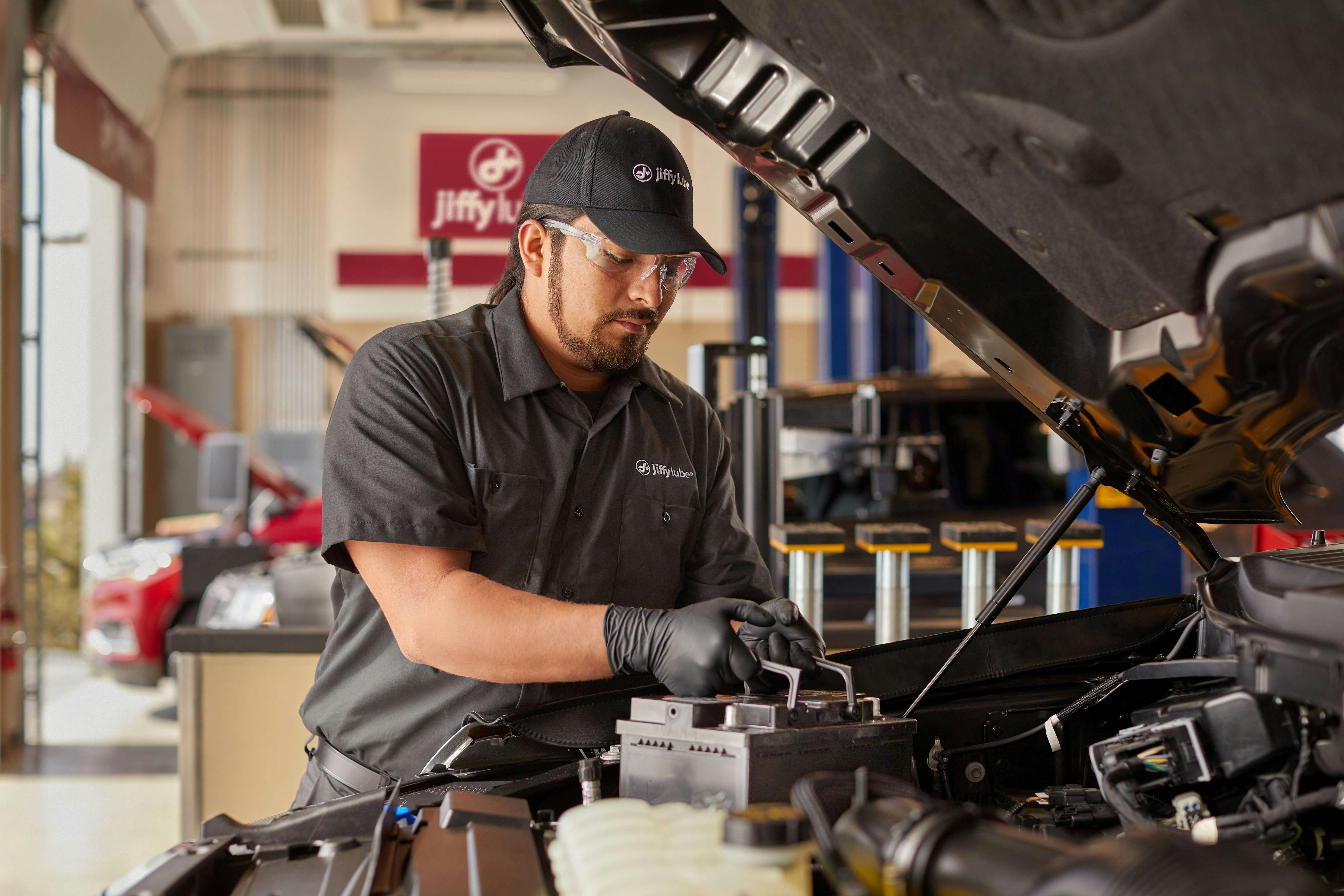You probably already know this, but your vehicle simply won’t start without the battery. However, do you know what is going on inside the battery to allow you to start your engine, crank up the music, and engage your wipers on a rainy day? If not, you’ve came to the right place!
Let’s get into the nitty gritty on how your car battery works, as well as how to jump-start your battery if it does fail, and the different types of available car batteries.
What Does a Car Battery Do?
Many car batteries are referred to as SLI batteries. SLI stands for starting, lighting, and ignition because these components all use the energy stored in the battery. So how does it do all that? Let’s break it down:
- A lead-acid car battery has a positive and negative terminal. They’re connected to the vehicle and send a flow of electrons to power the starter motor, headlights, wipers, and other electrical components.
- Inside a lead-acid battery, there are small energy-producing units called cells. How many cells are in a car battery? Six! Each cell can produce approximately two volts of energy, totaling ~12.6 volts.
- Each cell contains two electrodes: a positive electrode (cathode) and a negative electrode (anode). The electrodes are immersed in an electrolyte solution, usually a mixture of sulfuric acid and distilled water, which allows the flow of ions between the electrodes.
- When the car's ignition is turned on, the alternator generates electricity and charges the battery.
- During this process, the alternator converts mechanical energy from the engine into electrical energy, which is used to replenish the chemical reactions within the battery.
- When the car is started, the battery discharges and provides a surge of electrical power to the starter motor, which cranks the engine.
- The battery also supplies power to other electrical components in the vehicle, such as lights, radio, air conditioning, and various sensors.
- The battery's capacity is measured in ampere-hours, indicating the amount of charge it can deliver over a specific period.
- Over time, a car battery can lose its capacity due to chemical reactions and natural wear, eventually requiring replacement.
We know that is probably much more detail than you wanted to know, but now you know why the battery is so important.
How to Jump-Start a Car Battery
If your battery does fail, it is good to know how to jump-start it to get you back on the road. The chemical reaction in the battery is completely reversible, which is why you can jump-start your battery when you have a dead battery. Need a refresher? Here are the steps:
- Find a fellow driver who’s willing to help you jump-start your battery.
- Ask the other driver to park their vehicle as close as possible to your vehicle to ensure the jumper cables can reach the battery terminals on both vehicles.
- Ensure both vehicles are turned off, and the keys are removed from the ignition.
- Grab your jumper cables. In most cases, the positive cable is red, while the negative cable is black. Attach the positive clamp to the positive terminal (+) on the dead battery. Then, attach the other end of the positive cable to the positive terminal on the working battery. Repeat this process for the negative cable and terminal (-).
- Start the vehicle with the good battery and let it idle for a few minutes.
- Attempt to start the vehicle with the dead battery. Once it starts, let it run for several minutes to charge the battery.
- Disconnect the jumper cables in the reverse order they were connected. Start with the negative (-) terminal of the dead battery, then the negative (-) terminal of the working battery, then the positive (+) terminal of the working battery, and finally, the positive (+) terminal of the dead battery.
- Take a drive to charge the battery further.
The Different Types of Car Batteries
Depending on the vehicle you drive, you may have any one of these recommended batteries:
- Lead-acid: Most SLI batteries are lead-acid batteries. As mentioned before, these batteries use six series-connected cells to provide a 12-volt system. Known for their affordability and reliability, lead-acid batteries are the traditional choice for most vehicles.
- Lithium-ion: Most plug-in hybrid and all-electric vehicles use lithium-ion batteries composed of multiple lithium-ion cells. This option tends to offer better efficiency, requires less maintenance, and provides a longer lifespan than lead-acid batteries. However, they are usually more expensive than lead-acid batteries.
- Absorbed Glass Matt (AGM): An AGM battery is a lead-acid battery that utilizes a fiberglass mat between each plate to absorb and hold the battery’s chemical solution. They typically provide greater durability, cranking power, and longevity than traditional lead-acid batteries but are generally more expensive.

Visit Your Local Jiffy Lube for Any of Your Car Battery Needs
If you notice a slow engine crank, dim headlights, problems with your vehicle’s electrical components, or other symptoms, you should have your battery tested. You can bring your vehicle to Jiffy Lube, where a trained technician will inspect and test your battery and recommend the appropriate battery maintenance services based on the inspection results. If a replacement battery is needed, the service center team will remove and recycle your old battery and replace it with a new one that meets or exceeds your manufacturer’s recommendations. Plus, whenever you bring your vehicle for a Jiffy Lube Signature Service® Oil Change, we’ll perform a battery maintenance check to ensure your vehicle keeps blinking, honking, and shining for many miles to come.
NOTE: Not all services are offered at all Jiffy Lube service centers. Please call ahead or check jiffylube.com to ensure the service is available at the Jiffy Lube location near you.


